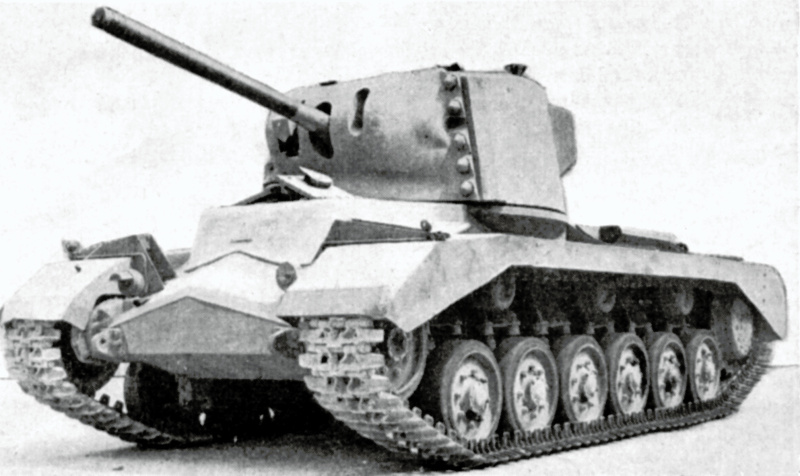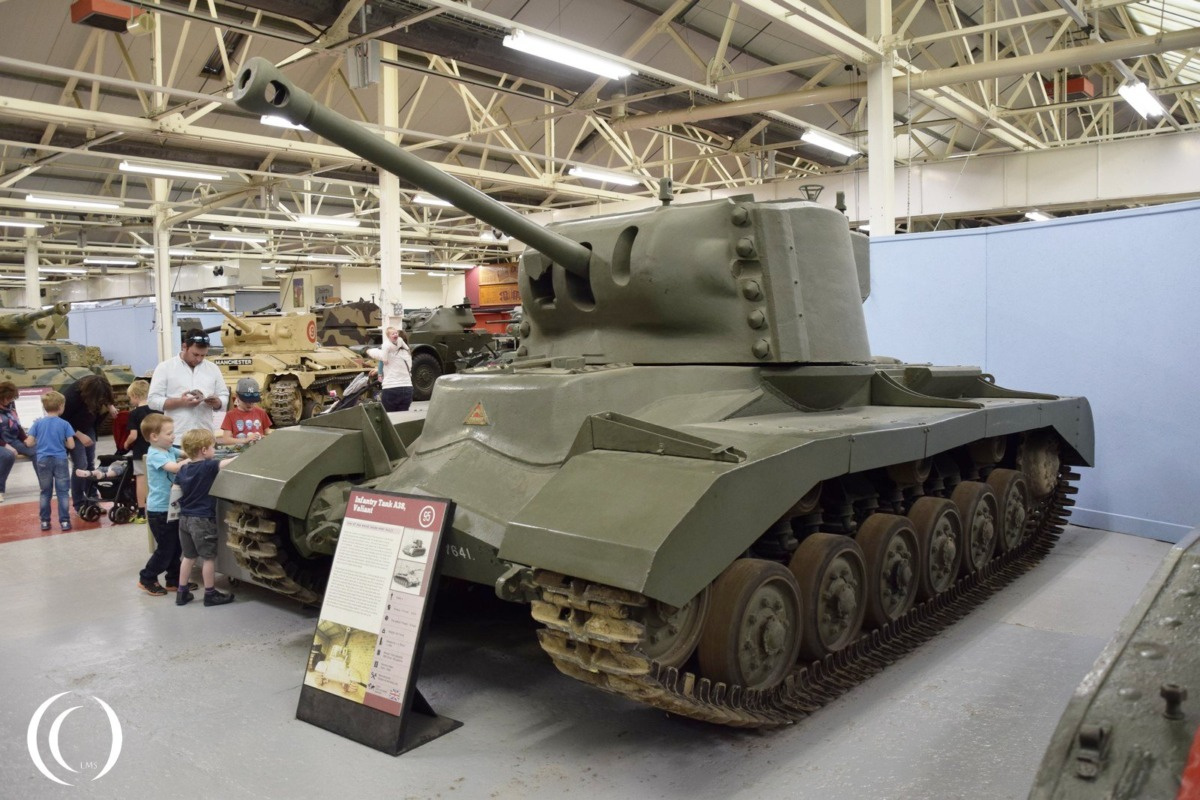
The Valiant Infantry Tank (A38) was a British WWII prototype developed as a potential successor to the Valentine and Churchill tanks. Designed in 1943 by Vickers-Armstrongs, the Valiant was part of a broader effort to create a heavily armored, mobile infantry support tank. However, despite high expectations, the project failed due to serious mechanical flaws and poor design execution.
Technically, the Valiant was a heavily armored vehicle, intended to provide enhanced protection while maintaining cross-country mobility. It featured cast and welded armor up to 114 mm thick on the front hull and turret, which was impressive for its time and on par with late-war heavy tanks. Its total weight was around 27 tonnes, relatively light considering its armor.

The tank was powered by a 120 hp GMC 6-71 diesel engine, paired with a 5-speed Merritt-Brown gearbox, which was wholly inadequate for the vehicle’s weight. As a result, the Valiant had poor mobility, with a maximum road speed of only 24 km/h (15 mph) and poor acceleration. Trials revealed excessive strain on the drivetrain, overheating issues, and difficulty maneuvering even under normal conditions.
The Valiant was armed with a QF 6-pounder (57 mm) gun housed in a compact cast turret, providing reasonable anti-armor performance for the mid-war period. It was supported by a Besa 7.92 mm coaxial machine gun. While the main armament was adequate for its class, by the time the Valiant was being tested, the 6-pounder was becoming outdated, as many Allied tanks had upgraded to 75 mm or 17-pounder guns.

Ergonomically, the Valiant was extremely poor. The driver’s compartment was cramped and uncomfortable, with the seat welded in place too far from the controls. Visibility was poor, crew access was restricted, and mechanical maintenance was difficult due to compact internal layout. During testing at Lulworth in 1945, one evaluation officer described it as “quite the worst tank I have ever sat in.”
Only one prototype of the Valiant was built, and it never entered production or service. The tank was deemed a complete failure, primarily due to its underpowered engine, poor mobility, and flawed crew ergonomics. It is currently preserved at The Tank Museum in Bovington, serving as a cautionary example of mismatched design priorities in armored vehicle development.